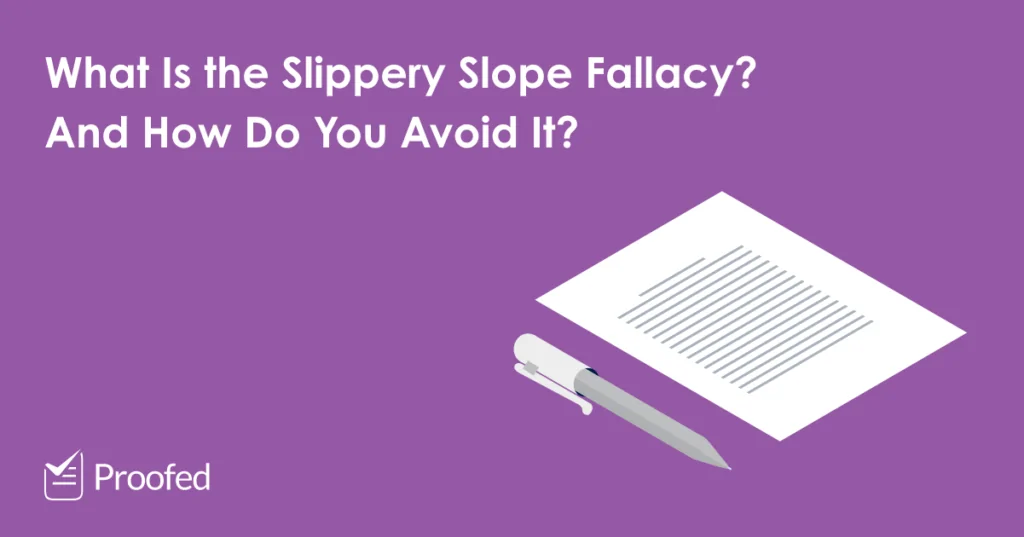Slippery slope arguments are common in academic writing. However, they’re also a type of fallacy (i.e. a mistake or bad argument). Why are they problematic? And how can you avoid the slippery slope fallacy in your work? We’ll explore the answers to these questions in this post.
What Is the Slippery Slope Fallacy?
The slippery slope fallacy is the claim that a certain course of action will lead to a chain of events that ultimately results in something significant (and usually negative). Essentially, a slippery slope argument says:
If X happens, then it will eventually lead to Y, so X is wrong.
Chaining arguments together is not always wrong. But in a slippery slope argument, ‘X’ is usually a relatively small first step, whereas ‘Y’ will be something extreme and unjustified. They also shift focus away from the immediate issue being discussed in favour of something purely hypothetical.
A Slippery Example
A common example of the slippery slope fallacy is an argument against legalising marijuana. The argument goes:
Find this useful?
Subscribe to our newsletter and get writing tips from our editors straight to your inbox.
- If we legalise marijuana, it will become normal.
- If it becomes normal, all drugs will be legalised.
- Eventually, this will lead to the collapse of society.
In this example, we start with a relatively uncontroversial premise and end up with a very dramatic conclusion! However, legalising one drug does not necessarily mean all drugs will be legalised. And even if they were, the leap to societal collapse is a big one. As a whole, then, the argument fails.
How to Avoid Slippery Slope Fallacies
So, how do you avoid the slippery slope fallacy? One option is to avoid argumentative chains and focus on the immediate point or issue, not potential consequences far down the line or under certain circumstances. But if you do use a series of linked arguments in your work:
- Make sure the chain is complete. Explain each step of your argument as clearly as possible. If you skip straight from your first premise (e.g. lowering the voting age) to an extreme conclusion (e.g. a Logan’s Run-style dystopia), you will leave a lot of questions unanswered.
- Make sure each link in the chain is valid. Every premise has to be true for the overall argument to work, so if even one link is illogical or not supported by evidence, you risk falling down a slippery slope.
- Be careful not to overestimate the likeliness of your conclusion. Unless each link in your chain is a logical certainty, your argument may get weaker the further you move from the original premise.
Hopefully this post will help you to spot and avoid the slippery slope fallacy in your writing. If you need more help, though, getting your work proofread can help you express yourself clearly, thereby strengthening your arguments.



